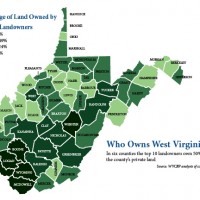The Stockholm Syndrome in Southern Appalachia?
When a hostage bonds with his/her captor, it is called “The Stockholm Syndrome.” Wikipedia says that it: “can be seen as a form of traumatic bonding, which does not necessarily require a hostage scenario, but which describes “strong emotional ties that develop between two persons where one person intermittently harasses, beats, threatens, abuses, or intimidates the other.” Wiki further states that the FBI has found that roughly 8% of victims succumb to the syndrome.
What are we to make of a situation where a much larger percentage—possibly even a majority—of a population of a million or more exhibits evidence of having succumbed to the syndrome? I submit that this is precisely what we now see in the coal mining areas of Southern Appalachia.
West Virginia native Jeff Young wrote: “The key to understanding West Virginia is to recognize that it is less a fully functioning state government than a resource-extraction colony.” http://grist.org/climate-energy/is-there-hope-for-west-virginia-as-it-moves-away-from-coal/
I have argued that the colonization was possible in the beginning and is maintained today only because the people of Southern Appalachia are perceived as deserving of colonial oppression.
North Carolina native, Betty Cloer Wallace wrote: “Appalachian mountain natives are the only group in America that many people still have the audacity to publicly ridicule as being ignorant—and worse.” https://mountainx.com/opinion/050609fighting_back/
Historians trace the stereotype from Will Wallace Harney’s article “A Strange Land and a Peculiar People,” published by Lippincott’s Magazine in October 1873, through John Fox, Jr to Al Capp and television’s “Beverly Hillbillies. I contend that, at least since 1888, the hillbilly stereotype rests mainly upon the story of the Hatfield and McCoy feud. In its “Hillbilly” entry, Wikipedia says: “Fueled by news stories of mountain feuds such as that in the 1880s between the Hatfields and McCoys, the hillbilly stereotype developed in the late 19th to early 20th century.” I agree.
Within a few days of entering graduate school at Cornell more than half a century ago, I was faced with this question from a fellow student from New York City: “What kind of people kill over a hundred of each other over a pig?” When I objected to the characterization, he produced a copy of the New York Times article reporting the death of Cap Hatfield in 1930, which gave him all the documentation he needed. After all, it was in the nation’s “Newspaper of record.”
In my more than eighty years, I have never had anyone refer to Harney, Fox or Capp as support for their opinion of my people. It is always “the Feud!” I wrote in my 2013 book, “The Hatfield & McCoy Feud after Kevin Costner: Rescuing History: “The feud story was a creation of the big city newspapers. The immediate purpose for its creation was to devalue the people and thereby facilitate the transfer of ownership of the wealth of the Valley to the same big city financiers who controlled those newspapers. The ultimate purpose was to transform the independent mountaineers into docile and willing wage workers. This transformation was abetted by the state governments and the elites on both the state and local levels, who hoped to profit by the transformation.”
I show in my book that the story of the Hatfield & McCoy feud is, indeed, a story and not history, and that it was created and is maintained for the purpose of facilitating the continuing colonial oppression of the region.
Ms. Wallace ended her essay with: “We do have a choice. We can hasten our own cultural demise by doing nothing, by drawing a circle around ourselves and trying to shut out the rest of the world. Or… we can pick up our pine knots and go to war—to save ourselves.”
Unfortunately, a large percentage of my people have done the opposite of what Ms. Wallace urges us to do. The worst screed ever penned about my people—for reasons amply stated in my book—is the book by Dean King, which came out in the wake of the hit Kevin Costner TV mini-series.
Mr. King wrote in his book that the man responsible for overseeing 650,000 acres of West Virginia land for the largest absentee “colonizer” of West Virginia took two days out of his schedule to show Mr. King around the feud region. Of course the land magnate’s time was not wasted, as the end result was a book that showed ALL the people of the feud area to be such low types that Mr. King’s stated “hero” of his story is the murderer of sleeping coal miners, Dan Cunningham.
When one looks at Mr. King’s Facebook page and sees the number of descendants of the people he maligns who are helping him to sell his massive libel of their ancestors, and, by extension, themselves, one sees the Stockholm Syndrome writ large.
The one that galls me most is a photo of King with descendants of Ellison Hatfield on his FB page, helping him sell his lies about their ancestor. King writes that Ellison Hatfield, one of the most respected men in Tug Valley, started the Election Day fight but drawing a knife on Tolbert McCoy.
Growing up on Blackberry in the 1940’s and ‘50’s,I heard the story of that fight from a dozen people who were eyewitnesses. I delivered the Williamson Daily News to the son of Preacher Anse who lived in Preacher Anse’s house from 1952-55. NO eyewitness, none of whom had a dog in the fight, placed a knife in Ellison’s hand. Not a single court record has a word of testimony placing a knife in Ellison’s hand. Yet, people directly descended from Ellison Hatfield help King sell that egregious lie about their ancestor.
If the pine knots are not taken up soon then the future is indeed bleak for such a people.
